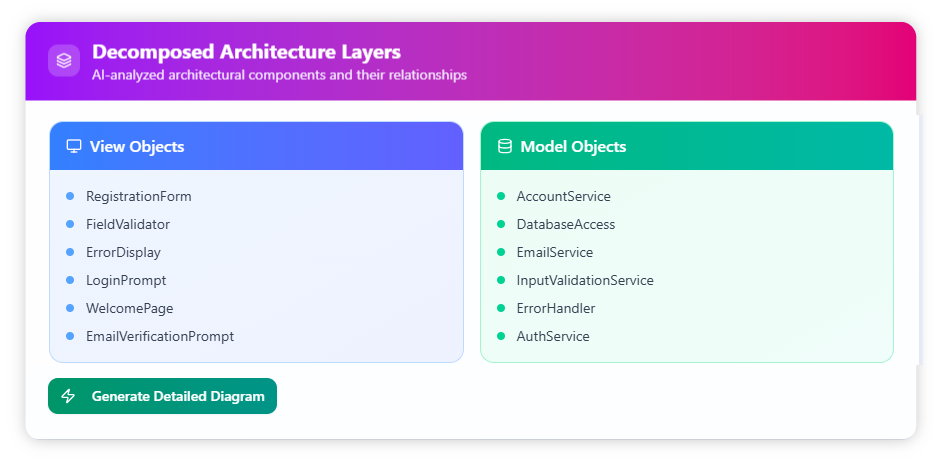Now Reading: View Objects vs Model Objects in Software Architecture
-
01
View Objects vs Model Objects in Software Architecture
View Objects vs Model Objects in Software Architecture
When working with sequence diagrams, it is common to mix user interactions and system logic in the same flow. While this gives a quick overview, it often blurs the boundaries between what the user sees and what the system actually does. By identifying view objects and model objects, you can decompose a system into clearer layers, creating a cleaner and more maintainable design.

What are View Objects?
View objects represent the user interface components that handle interaction with the actor. They are responsible for displaying information and capturing inputs. In sequence diagrams, these might include screens, forms, buttons, or input fields.
- Example: In an ATM system, view objects could be CardReader, PINInputField, and DisplayScreen.
- Role: Deliver information to the user and collect the necessary input to proceed.
What are Model Objects?
Model objects capture the core business logic and data handling of the system. They perform calculations, validations, and updates to maintain system integrity, and do not directly interact with the user but instead respond to inputs relayed through the UI.0
- Example: In the same ATM system, model objects could be PINValidator, AccountDebitor, and TransactionLogger.
- Role: Execute the operations needed to fulfill a request, ensuring correctness and security.
Why Separate View and Model Objects?
Mixing user interface with logic often leads to systems that are hard to test, scale, or maintain. By decomposing them into view and model layers:
- Clarity – Sequence diagrams become easier to read, with a clear division between UI actions and backend processes.
- Maintainability – UI changes (e.g., redesigning a screen) can be done without affecting core business rules.
- Reusability – Model objects can be reused across multiple interfaces or applications.
- Scalability – Complex systems can grow more systematically by extending layers instead of rewriting mixed logic.
Decomposition in Action
Consider the ATM Withdraw Cash scenario. At first glance, you might only capture the actor inserting a card, entering a PIN, and receiving cash. After decomposition:
- View objects: CardReader, PINInputField, DisplayScreen
- Model objects: PINValidator, AccountDebitor, CashDispenser
This decomposition ensures that your diagram reflects not only the user journey but also the internal mechanisms that make the transaction possible.

Conclusion
Manually decomposing diagrams requires experience and careful thought. The Sequence Diagram Refinement Tool accelerates this process by analyzing your diagram and suggesting relevant view and model objects. This makes it easier to separate UI from logic, ensuring your sequence diagrams evolve into detailed MVC-ready designs.

